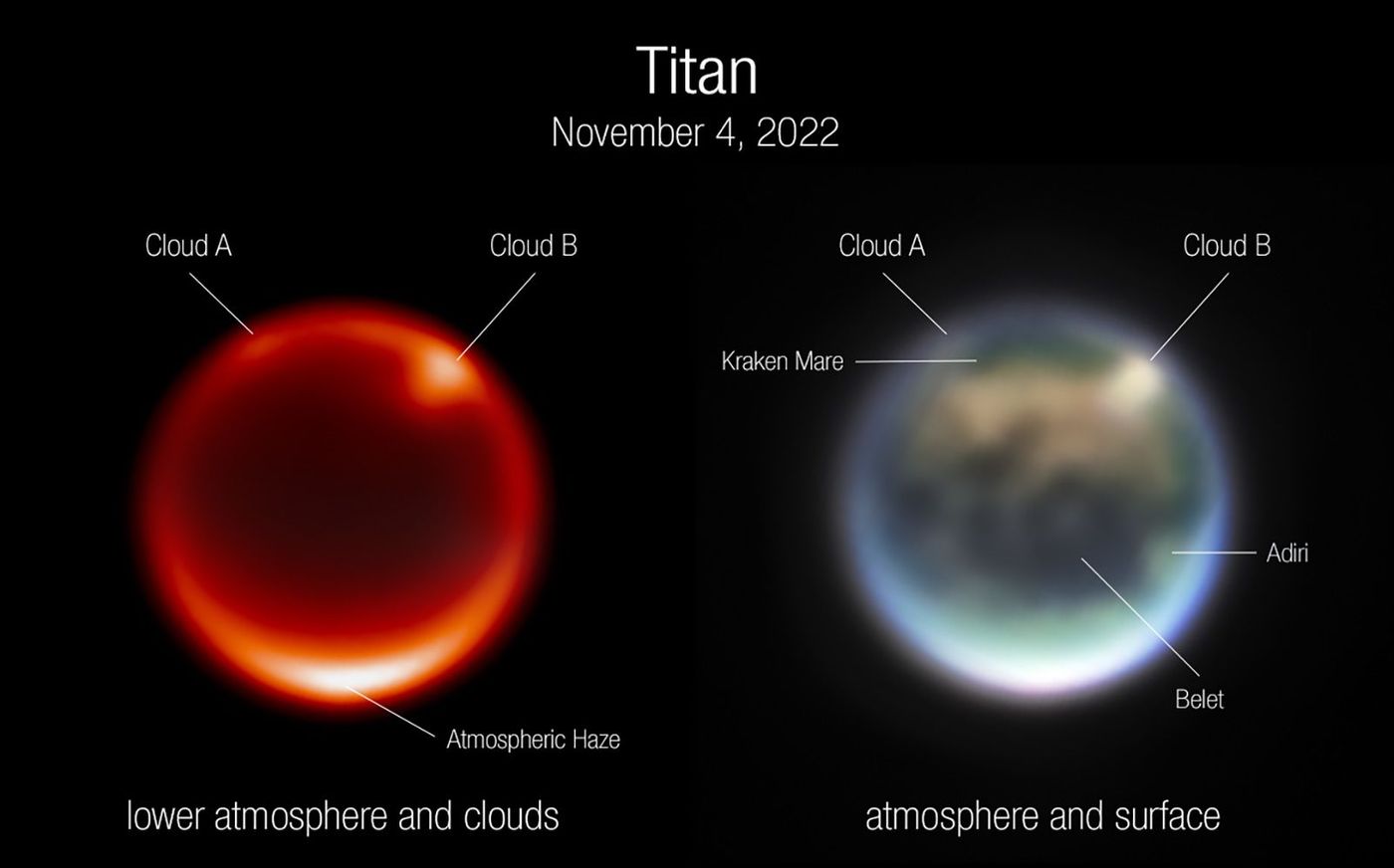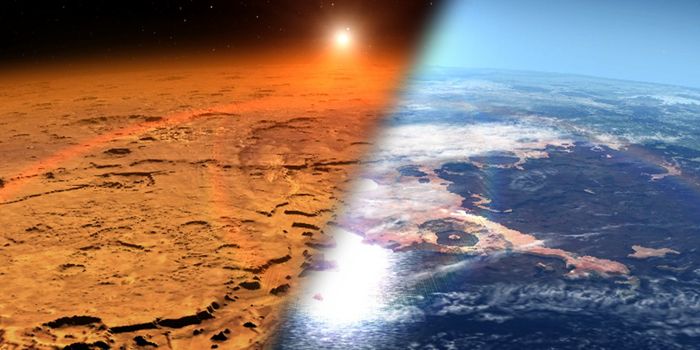JWST Images Titan Like Never Before
Saturn's moon, Titan, imaged by the James Webb Space Telescope. For context, Kraken Mare is a liquid methane sea, Belet is a region of sand dunes, and Adiri is a bright spot. (NASA/European Space Agency/Canadian Space Agency)
NASA’s James Webb Space Telescope (JWST) keeps sending us fantastic pictures of our universe, but this time it was from within our own solar system, specifically Saturn’s largest moon, Titan. In recent images of the large moon, JWST used its powerful NIRCam instrument and four filters to penetrate Titan’s thick atmosphere and photograph clouds, atmospheric haze, and even the sand dunes and methane lakes across its surface.
“This is some of the most exciting data we have seen of Titan since the end of the Cassini-Huygens mission in 2017, and some of the best we will get before NASA’s Dragonfly arrives in 2032,” Dr. Zibi Turtle of Johns Hopkins University, who is Dragonfly’s principal investigator, said in a statement. “The analysis should really help us to learn a lot about Titan’s atmosphere and meteorology.”
While some of these images make Titan look almost Earth-like with the blue and green seen in the images, it is the JWST filters that bring out the colors. In visible light, Titan is almost orange since its thick, hazy atmosphere prevents normal cameras from seeing its surface. This study was assisted by ground-based cameras such as the Keck Observatory in Hawaii, which can also penetrate Titan’s atmosphere and see the clouds, as well.
For the study, JWST first imaged Titan and follow-up observations were conducted by Keck, which confirmed similar-looking clouds initially seen by JWST.
“We were concerned that the clouds would be gone when we looked at Titan one and two days later with Keck, but to our delight there were clouds at the same positions, looking like they might have changed in shape,” said Dr. Imke de Pater, an astronomer at UC Berkeley, and a Professor of the Graduate School.
While JWST continues to wow astronomy lovers with images of the universe, NASA is gearing up to send a quadcopter to Titan in 2032 with the Dragonfly mission, as Dr. Turtle mentions. This flying robot will travel across Titan’s surface and examine its many features such as sand dunes and methane lakes in hopes of finding signs of life on Saturn’s largest moon.
Sources: Berkeley News, NASA
As always, keep doing science & keep looking up!









